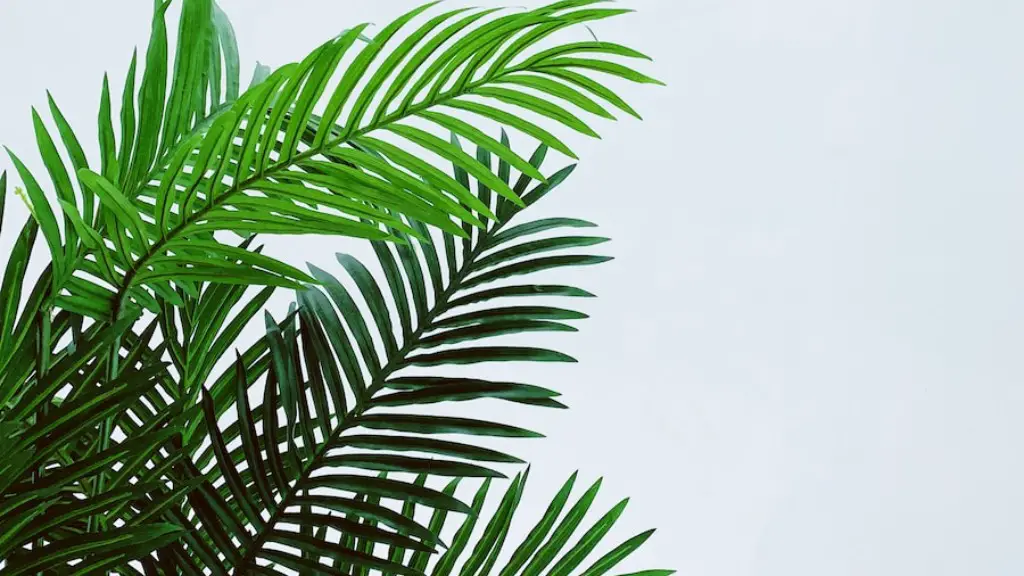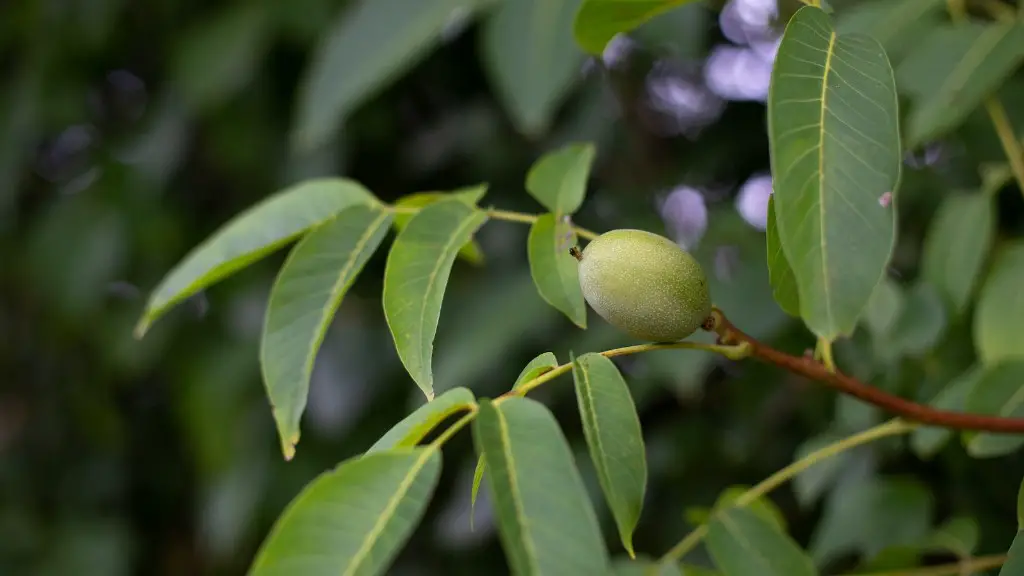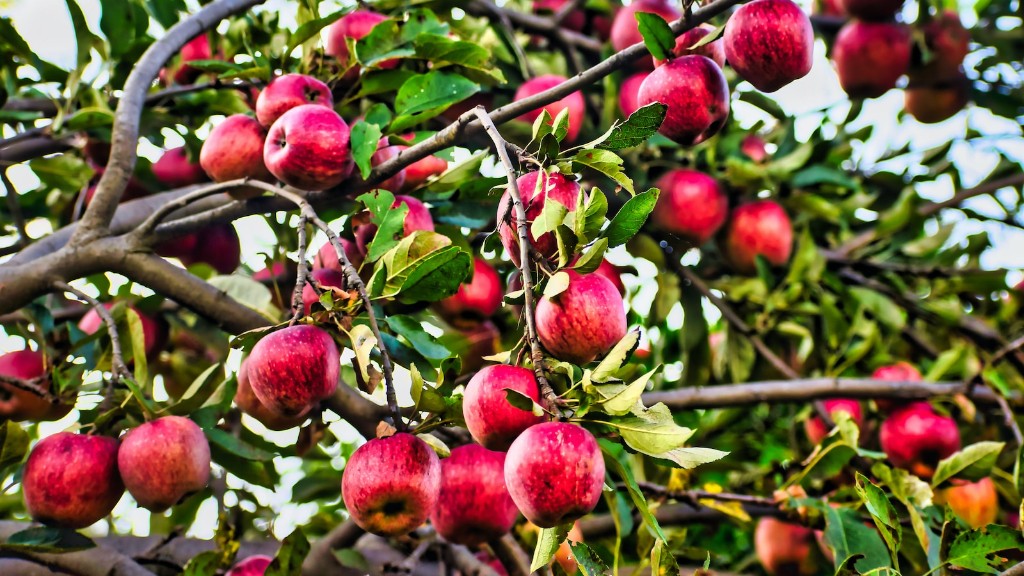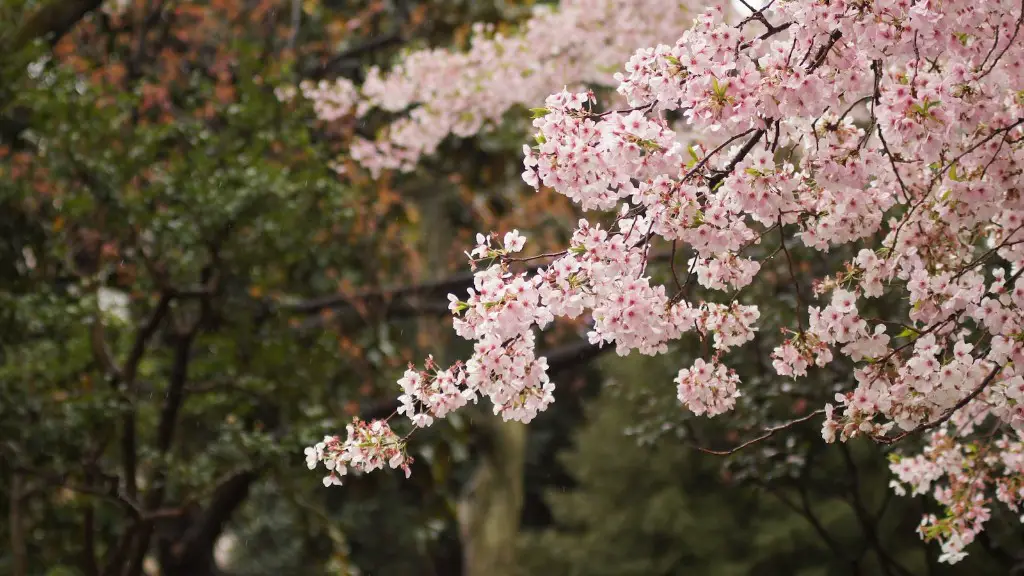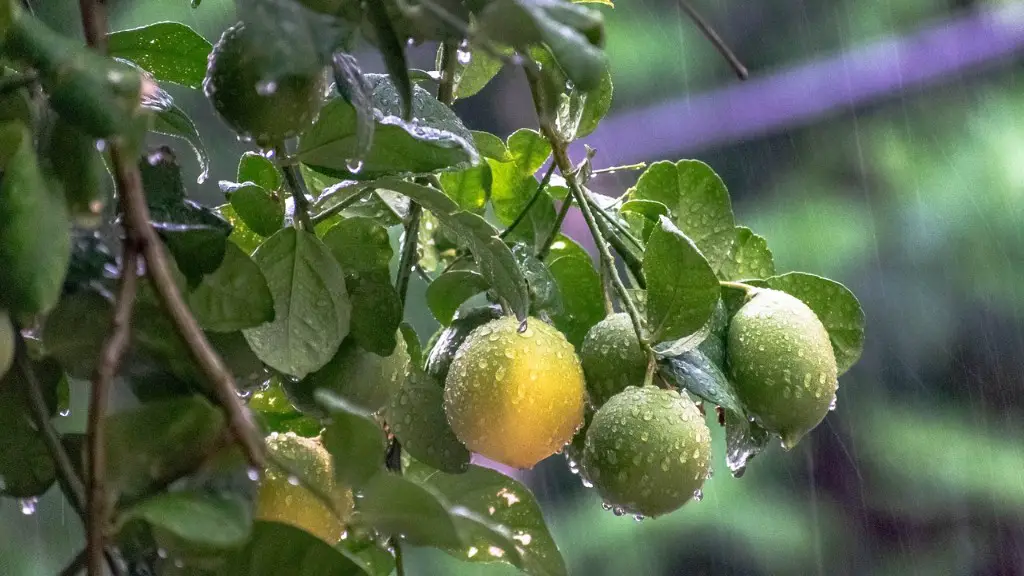If your palm tree has yellow leaves, it is likely suffering from a nutrient deficiency or disease. Treating yellow leaves on palm trees requires a little investigation to determine the cause and appropriate treatment. nutrient deficiencies can be corrected by fertilizing with a palm fertilizer that contains the necessary nutrients. For example, a palm tree that is deficient in magnesium will need a fertilizer that is high in magnesium. If the yellow leaves are caused by a disease, you will need to consult a professional to determine the best treatment.
There are a few things you can do to treat yellow leaves on a palm tree. First, check the tree for any pests or disease. If you find any, treat them accordingly. Second, make sure the tree is getting enough water. If the tree is too dry, the leaves will turn yellow. Third, make sure the tree is getting enough sunlight. If the tree is in too much shade, the leaves will turn yellow. Finally, fertilize the tree with a palm tree fertilizer. This will help the tree to be healthy and green.
How do you fix yellow palm leaves?
If your palm trees have yellow leaves, it is likely due to a nutritional deficiency. In order to restore them to health, you will need to fertilize them with a fertilizer that contains nitrogen, potassium, and magnesium.
If you remove yellow fronds from a palm tree, it could actually lead to the death of the tree. The yellow fronds are actually pushing up the nutritional deficiency into the new growth. Therefore, it’s best to only remove fronds that are totally brown.
Can yellow palm fronds turn green again
If you notice that your plant’s leaves are turning yellow, it is important to try to identify the cause so that you can take steps to correct the problem.Yellow leaves are often a sign of stress, and it’s generally not possible for yellow leaves to turn green again. Poor watering and lighting are the most common reasons, but fertilizer problems, pests, disease, acclimatization, temperature extremes, or transplant shock are other potential causes. If you can identify the cause of the stress, you can take steps to correct it and help your plant recover.
If your tree is not getting enough water, the leaves can turn yellow in an attempt to conserve water. You can test the moisture of your tree by sticking a screwdriver into the soil. If it is difficult to push in, your tree may be thirsty and could benefit from a deep watering.
How do I make my palm tree green again?
If you want to revive a palm tree, you need to follow these steps:
1. Add the proper amount of water.
2. Use high-quality fertilizer.
3. Use top-notch soil.
4. Cut fronds only after they are dead.
5. Do not prune during hurricane season.
6. Plant palms at the right level.
7. Provide the right nutrients.
8. Increase or decrease sunlight.
Mature palms in the landscape require regular fertilization with a complete, granular, palm tree fertilizer. This fertilizer should be specially formulated for palms and contain all the essential elements, including manganese. Manganese helps prevent yellowing and necrosis between the leaf veins and a reduction in leaf size.
Does Epsom salt help palm trees?
If your palm tree is suffering from a magnesium deficiency, Epsom salt can be a good supplement in addition to regular fertilizer applications. If that’s the case, use Epsom salt. Sprinkle 2 to 3 pounds of Epsom salt under the tree’s canopy, then water.
Overwatering your palm tree can cause a number of problems including drooping leaves, black spots on leaves and stems, mold on the surface of the soil, and yellowing leaves. If you see any of these signs, it’s important to adjust your watering schedule and cut back on the amount of water you’re giving your tree.
What causes palms to turn yellow
Yellow discoloration of the skin may be associated with carotenemia, hypothyroidism, liver disease, and renal disease. It is an uncommon finding in patients with diabetes. Traditionally, it is considered to be related to carotenemia, but it may also be associated with end-products of advanced glycation.
Poor drainage and improper watering are the leading reasons behind yellow leaves. In overly wet soil, roots can’t breathe and they suffocate, shut down and stop delivering the water and nutrients plants need. Underwatering, or drought, has a similar effect.
Can leaf yellowing be reversed?
When a leaf loses its chlorophyll, the plant abandons it and begins to absorb leftover nutrients from the leaf. Once the leaf turns yellow, the plant can no longer make it turn back green again. However, in cases of nutrient deficiencies, sometimes yellow leaf color can green back up again with treatment.
Sulphur is a vital component in the formation of chlorophyll, which is essential for photosynthesis. Deficiencies in sulphur can result in yellow leaves and stunted growth.
Does Epsom salt help yellow leaves
If you notice that your plant’s leaves are turning yellow, it could be indicative of a sulfate or magnesium deficiency. Epsom salts are a great way to correct both of these problems. Simply mix the Epsom salts with water and apply to your plant’s leaves.
If you find that your plant’s leaves are turning yellow, it is likely a sign that you are either overwatering or underwatering it. Plants need water to survive, and if they are not getting enough of it, they will drop leaves in order to conserve their supply.
Will fertilizer help yellow leaves?
One way to prevent your plant from losing its chlorophyll is by delivering the necessary nutrients through fertilizers. If your plant’s leaves are turning yellow, it is most likely due to a nutrient deficiency. The four most common nutrients that cause this issue are nitrogen, magnesium, iron, and calcium. By fertilizing your plant with the necessary nutrients, you will help prevent the loss of chlorophyll and keep your plant healthy.
A new palm should be watered everyday during its first week. For the second week, watering should be done every other day. For the third week, watering should be done three times a week. Thereafter, watering should be done as normal for established plants. For more established palms, watering should be done only 2-3 times per week, and this is only in the absence of rainfall.
Conclusion
If you have yellow leaves on your palm tree, it is likely due to a nutrient deficiency. Palms are heavy feeders and require a lot of nutrients to stay healthy. Try fertilizer palm tree food that is high in nitrogen, potassium, and phosphorus.
There are a few things you can do to treat yellow leaves on palm trees. First, make sure they are getting enough water. If they are, then you can try fertilizing them. You can also try trimming the leaves to see if that helps. If none of these things work, then you may need to consult a professional.

